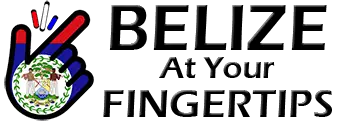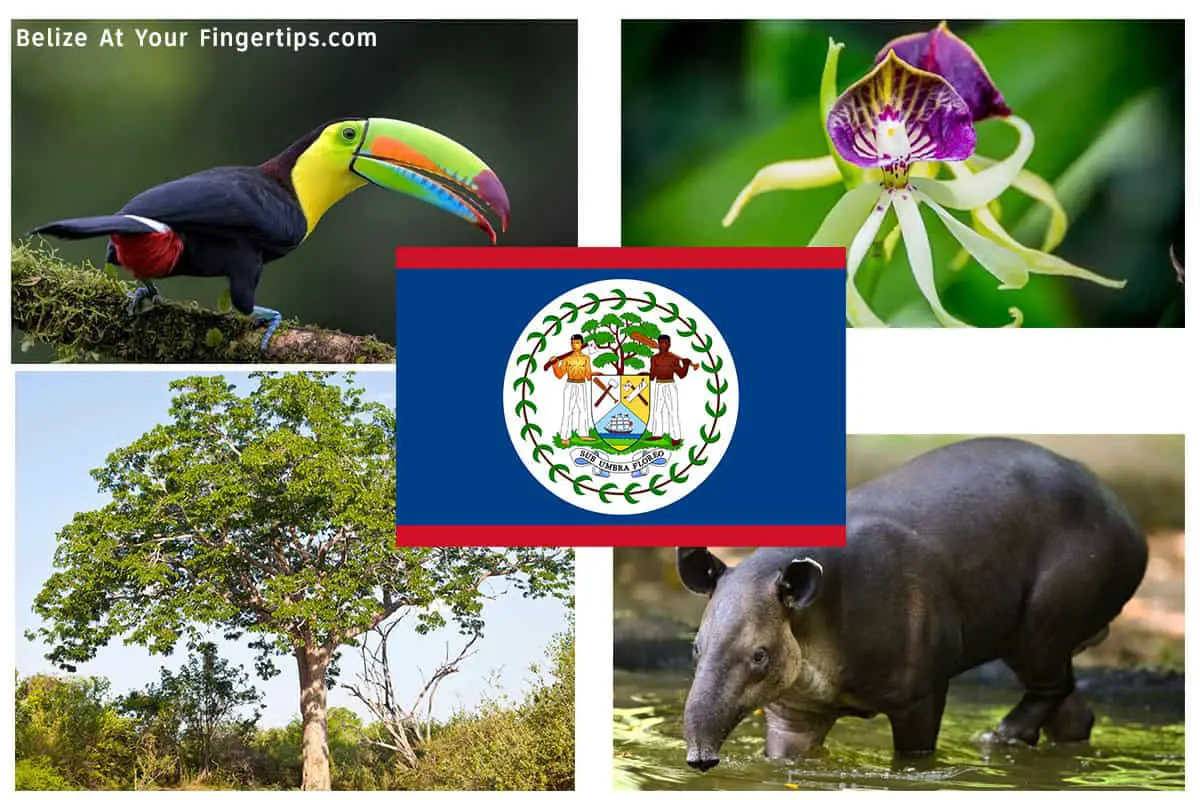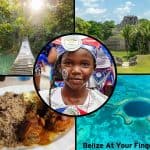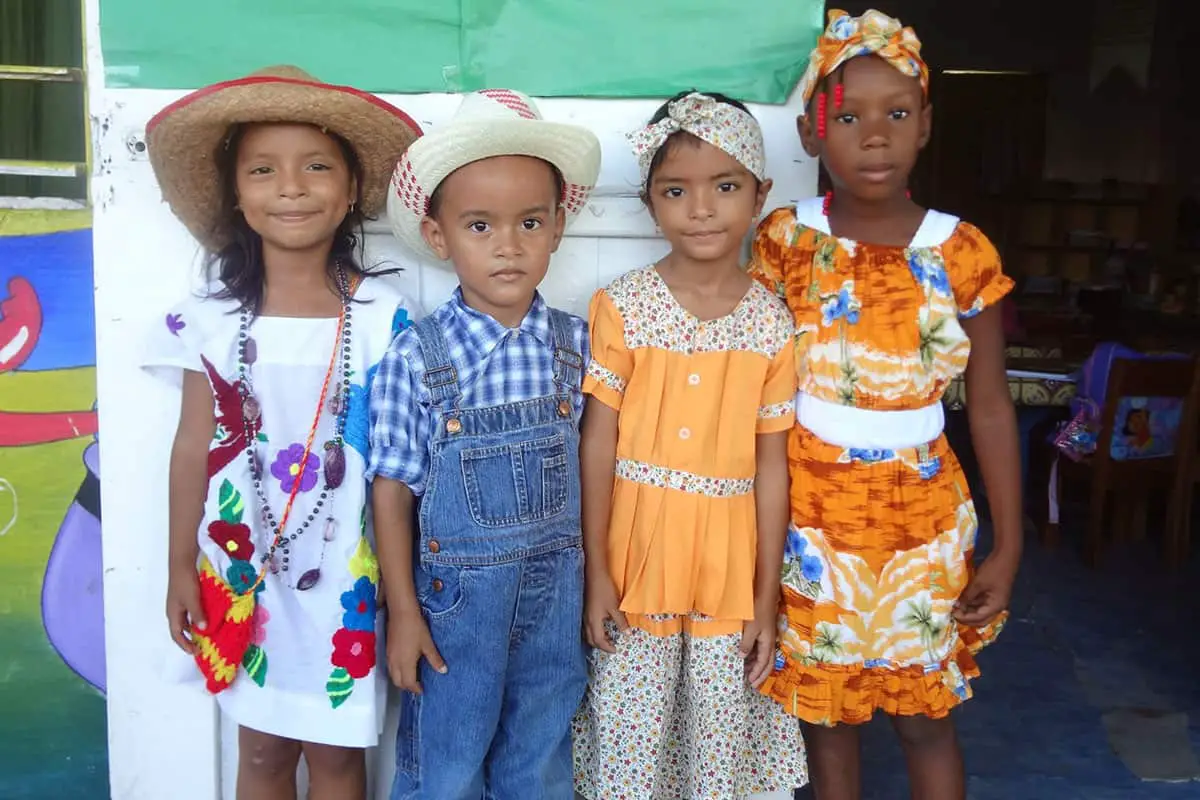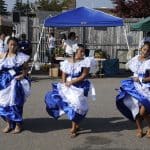Located in Central America, Belize is a small country made up of tropical jungles, swaps, and mountains. It borders Mexico, Guatemala, and the Caribbean sea and enjoys a sub-tropical climate with both wet and dry seasons. The country only became independent from Britain in 1981, although the process and negotiations began in 1964.
Just before independence, the National Symbols committee of Belize put together the national symbols that included the flag, tree, bird, flower, and animal for the newly independent country.
If you’ve never come across Belize before and were wondering what their national symbols are, keep reading.
The Belize National Flag
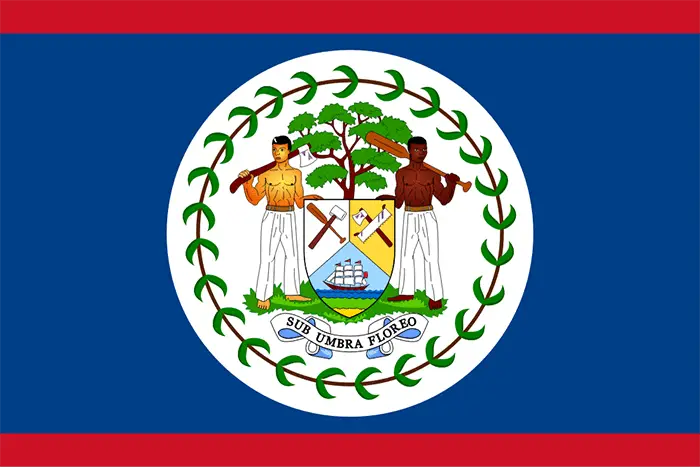
Belize’s bold royal blue and red flag showcases the coat of arms on a white disk that rests in the flag’s center.
What sets the Belize flag apart from the flags of other countries is that it is the only one with people on it. You might be wondering how the flag’s design came about. The National Symbols committee put out an advertisement for citizens to submit designs. The winner would receive a cash prize. Of all the designs submitted, the committee chose the flag that represents Belize today.
The flag flaunts colors of royal blue, red, and white. These colors symbolize the people’s unity.
The Coat of Arms of Belize
The coat of arms represents the history of the people of Belize and the great Mahogany tree that shaped their economy.
Like the flag, every detail on the coat of arms holds meaning:
- The Mahogany tree: At the top of the coat of arms is the Mahogany tree, which stands for the base of Belize’s economy.
- The shield: Under the tree is a shield divided into three parts by a vertical line and an inverted V. There are symbols in each component: the left portion of the shield contains a squaring ax and an oar, while the right includes a beating ax and saw. At the bottom of the shield is a ship in full sail on the sea.
- The scroll: Underneath the shield is a scroll with the national motto written on it. The motto in Latin reads ‘Sub Umbra Florea.’ This translates to ‘Under the shade, I flourish,’ referring to the shade of the Mahogany tree.
- Woodworkers: On either side of the tree, holding the shield, are two men who are log woodworkers. The lighter-skinned man on the left carries an ax to represent the woodcutters, while the darker-skinned man on the left carries an oar.
- The oar: The oar carried by one of the men represents the fact that the workers had to travel by river to find log wood and then transport it back.
- Olive leaves: The coat of arms has a wreath border of fifty olive leaves, representing the year 1950. This was the year that Belize, formerly British Honduras, began its journey to becoming independent.
Belize’s National Flower
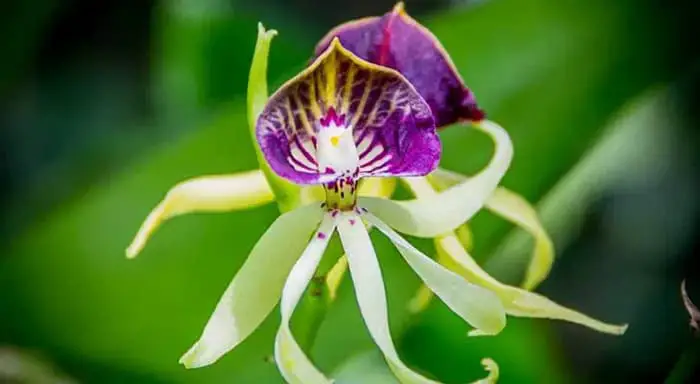
The national flower of Belize is the small yet eye-catching Black Orchid that grows on trees in damp parts of the country.
There are over a hundred types of orchids that you can find in Belize, so it is only natural that the national flower will be an orchid, specifically the Black orchid (or Encyclia cochleatum). The black orchid is indigenous to Central America, Columbia, Venezuela, the West Indies, and Southern Florida.
While this plant can bloom all year round, it most commonly flowers between July and September and grows on trees in damp areas. The blooms are pretty small, so you may not always notice them.
The orchid’s flower petals and sepals are greenish-yellow with a shade of purple at the base. The flower is shaped like a clam and is dark purple with dark purple protruding veins. The orchid can grow about half a foot in length with just a few leaves.
The National Tree of Belize
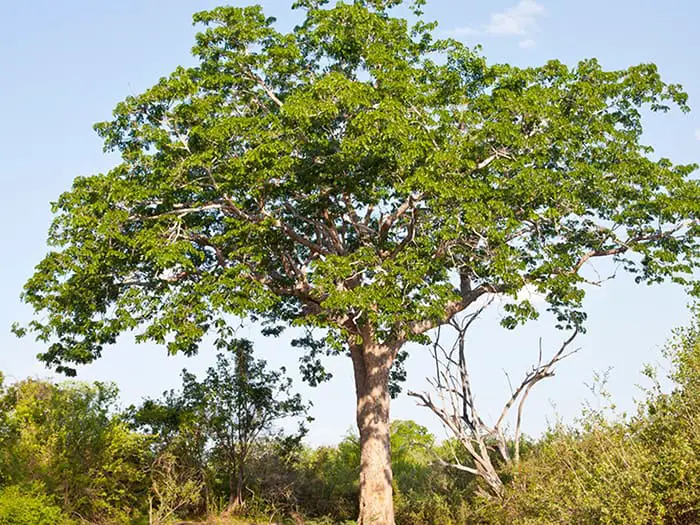
Belize’s national tree is the magnificent Mahogany tree that laid the foundation for the country’s economy.
A tree that was of paramount importance in the development of Belize’s economy in the 17th and 18th centuries was the Mahogany tree. Considering its historical importance, it’s no surprise that the giant tree is a national symbol.
The tree has a long, straight trunk that can grow to over a hundred feet tall and holds large, green, shiny leaves. It grows naturally in the Belize rain forest, and its wood is still a notable export.
During the mid-17th century, British settlers exported squared logs from the Mahogany tree to the United Kingdom. These days it is shipped in the form of sawed lumber.
Belize’s National Bird
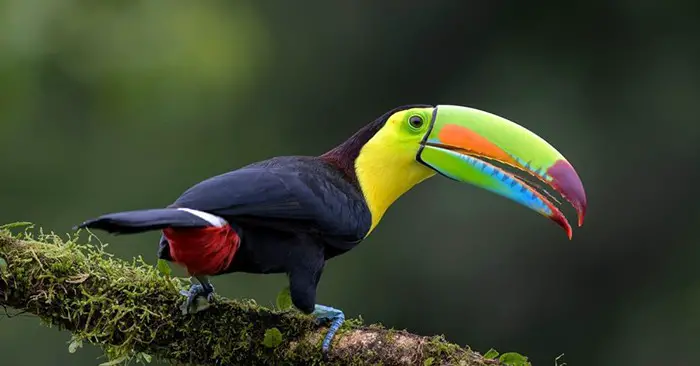
The Keel-Billed Toucan, with its bright yellow chest, cheeks, and black body, is Belize’s national bird.
The strikingly colorful Keel-Billed Toucan is scientifically named the Ramphastos sulfuratus. This little bird is about 20 inches long, with primarily black feathers covering its body.
Its cheeks and chest are vibrant sunshine yellow with a slight green ring around its eyes. The feathers under its tail are red with a white patch at the base.
A distinctive feature of this bird is its giant beak that is shaped like a canoe and brightly colored in yellow, orange, red, green, and blue. Keel-Billed Toucans are herbivores; they prefer eating fruit which they cut off trees with the serrated edge of their bill.
You can find Toucans in large open areas with many trees since they nest in trees. They cannot make their own holes but look for natural hollows in trees to nest in. They may choose to inhabit abandoned holes created by woodpeckers and other animals.
Typically, Toucans lay two to four eggs a year, and both parents incubate them. The eggs usually hatch after about sixteen to eighteen days, and the young birds remain in the nest for about six to seven weeks.
Belize’s National Animal
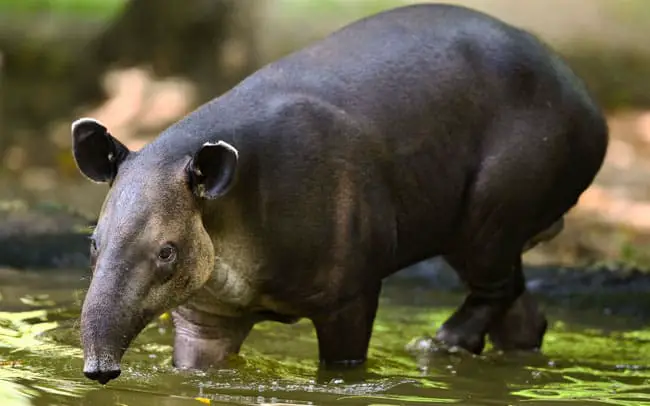
The mountain cow, or tapir, is the national animal of Belize. It is a stout brownish herbivore that grazes on river banks.
The biggest mammal in the American Tropics is the tapir. Although it is often called a mountain cow, it is not a cow; in fact, it is part of the rhino family. This animal is a dusty brown, with a stout body and short legs and about the size of a cow.
Around its eyes and lips is a white fringe; some have white fur patches on their chest and throat. Their ears protrude outwards and are white on the top edges.
The mountain cow is a strong swimmer that is most active at night. It is a vegetarian that spends much time in shallow muddy water or along river banks.
Final Remarks
Since becoming independent from Britain, Belize has established its own national symbols. These symbols include:
- The blue and red flag with the coat of arms in the middle.
- The Black Orchid as the national flower.
- The Mahogany tree.
- The Keel-Billed Toucan as the national bird.
- The Tapir or Mountain cow as the national animal.
What is the National Bird of Belize?
The National Bird of Belize is the keel-billed toucan. Belize is a multicultural country with several languages spoken in Belize, including English, Spanish, and Creole. However, the keel-billed toucan is a unifying symbol of the country and is even featured on the country’s national emblem.
Bonuses
National Prayer Of Belize
Almighty and Eternal God, who through Jesus Christ has revealed Your Glory to all nations, please protect and preserve Belize, our beloved country.
God of might, wisdom and justice, please assist our Belizean government and people with your Holy Spirit of counsel and fortitude.
Let your light of Your divine wisdom direct their plans and endeavors so that with Your help we may attain our just objectives. With Your guidance, may all our endeavors tend to peace, social justice, liberty, national happiness, the increase of industry, sobriety and useful knowledge.
We pray, O God of Mercy, for all of us that we may be blessed in the knowledge and sanctified in the observance of Your most holy law, that we may be preserved in union and in peace which the world itself cannot give. And, after enjoying the blessings of this life, please admit us, dear Lord, to that eternal reward that You have prepared for those who love You.
AMEN
Note: The National Prayer of Belize was written by Premier George Price (later to become Belize’s first Prime Minister), prior to independence in 1981
National Anthem Of Belize – Land of the Free
Officially adopted on Independence Day 21 September 1981, Land Of The Free is the official national anthem of Belize.
The lyrics were written by Samuel Haynes and the music composed by Selwyn Walford Young in 1963.
Lyrics:
O. Land of the Free by the Carib Sea,
Our manhood we pledge to thy liberty!
No tyrants here linger, despots must flee
This tranquil haven of democracy
The blood of our sires which hallows the sod,
Brought freedom from slavery oppression’s rod,
By the might of truth and the grace of God,
No longer shall we be hewers of wood.
Refrain:
Arise! ye sons of the Baymen’s clan,
Put on your armour, clear the land!
Drive back the tyrants, let despots flee –
Land of the Free by the Carib Sea!
Nature has blessed thee with wealth untold,
O’er mountains and valleys where prairies roll;
Our fathers, the Baymen, valiant and bold
Drove back the invader; this heritage hold
From proud Rio Hondo to old Sarstoon,
Through coral isle, over blue lagoon;
Keep watch with the angels, the stars and moon;
For freedom comes tomorrow’s noon.
